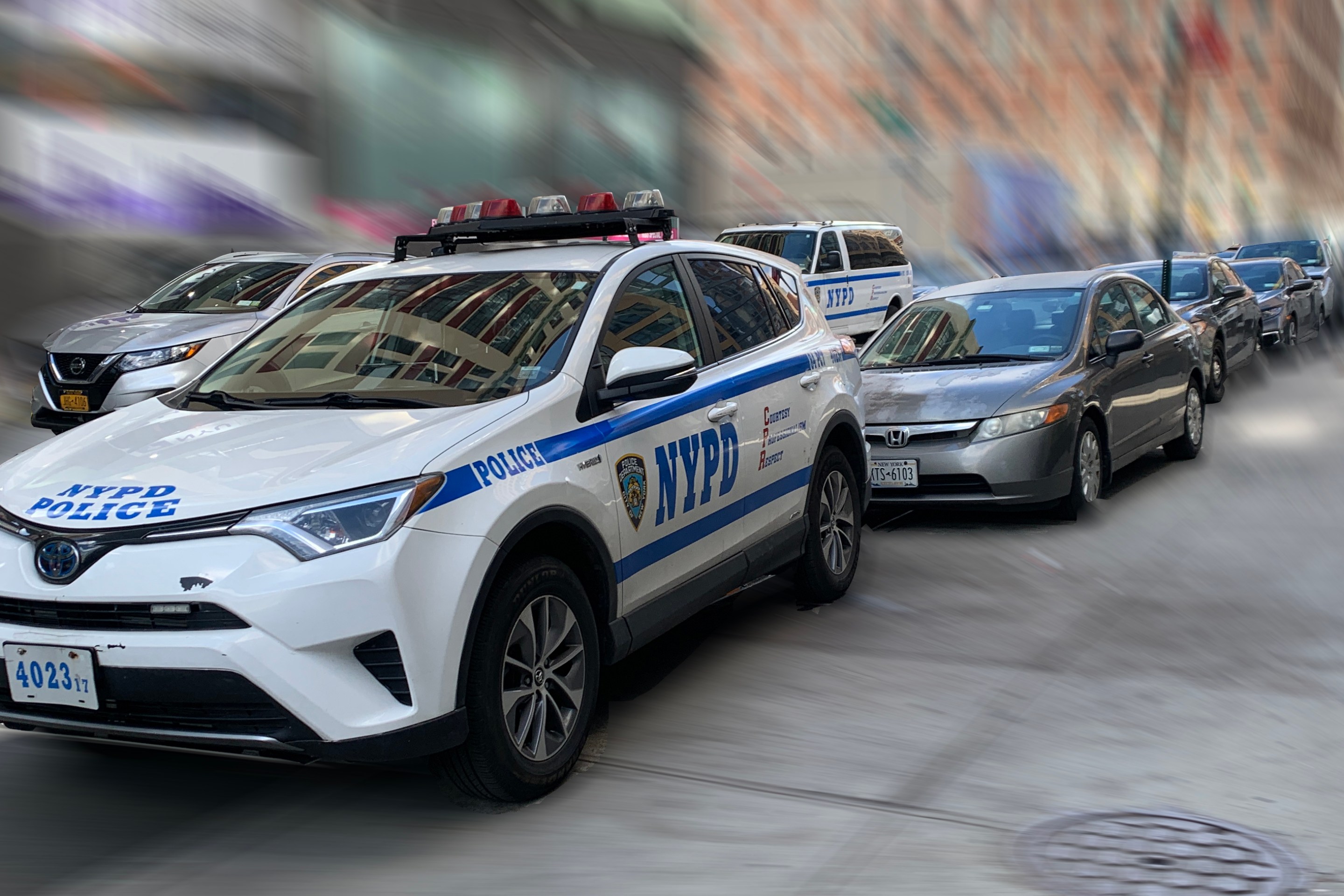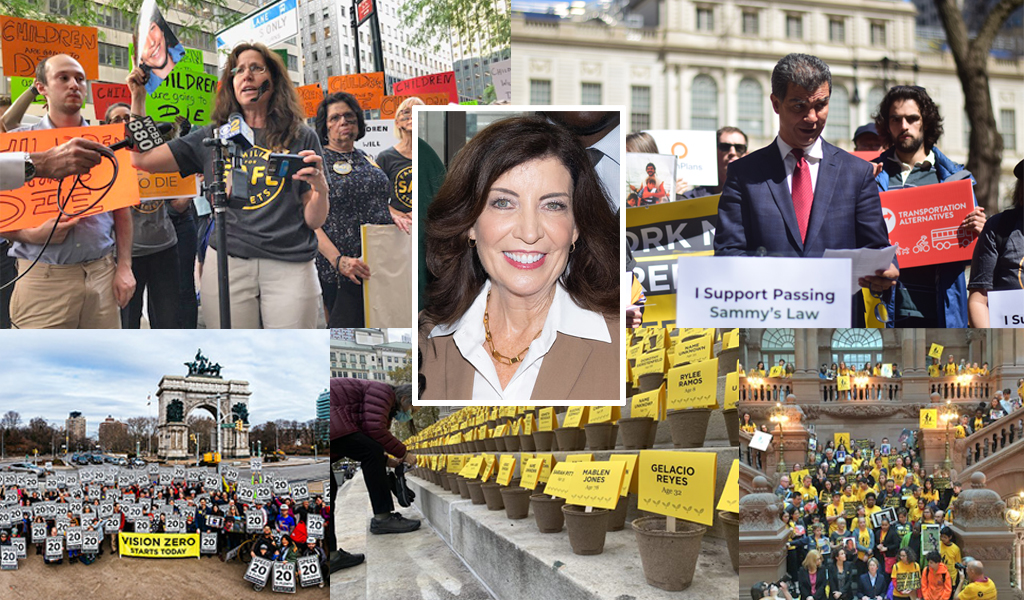Council Mems Display Parking Ignorance at Flushing Commons Hearing
12:04 PM EDT on July 16, 2010
The fight over Flushing Commons shifted to the City Council yesterday, as a key subcommittee turned its attention to the contentious megaproject and the battle royale over parking in booming downtown Flushing. Though the developers propose to redevelop an 1,100-space municipal parking lot and still increase the total amount of parking on-site, that isn't enough for most members of the City Council or the vociferous critics who turned out for the hearing. The pressure on the developer is pushing in only one direction: build more parking and charge less for it.
 Flushing Commons will already flood Downtown Flushing with parking, but many are calling for even more. Image: Inhabitat
Flushing Commons will already flood Downtown Flushing with parking, but many are calling for even more. Image: InhabitatCouncil members may show fluency with the policy details of some issues, but yesterday's hearing proved that parking isn't one of them. Basic concepts, like the fact that adding more parking will exacerbate Flushing's grinding congestion, not alleviate it, or that free parking is bad for business, simply haven't begun to penetrate the consciousness of most council members, who wield final authority over major land use decisions. Sustainable transportation advocates have a long way to go in educating our legislators about how parking really works.
In a rarity for the NYC land-use process, where battles tend to focus on building heights, housing affordability, or job creation, parking issues took center stage at yesterday's hearing. Flushing merchants waved signs reading "Give us parking or death" as the Zoning Subcommittee interrogated the development team over the appropriate quantity and price of parking at Flushing Commons.
The proposal for Flushing Commons includes 1,600 parking spaces, with another 200 slated for addition to a nearby municipal lot. That number came straight from the parking-obsessed Economic Development Corporation, which reasoned that Flushing Commons should build not only the number of spaces required by zoning -- around 700 -- but also replace each one of the 1,100 subsidized spaces in the municipal lot it will replace. It's an enormous allocation of space to the private automobile in the heart of downtown Flushing, a neighborhood with the third busiest pedestrian intersection in the city and the busiest subway station outside Manhattan.
Most people who testified, however, believed 1,600 parking spaces would be unacceptably few. Without the ability to park all day at the municipal lot, said one Union Street merchant through a translator, "I have to give up my job. I don't want to lose my job and I oppose this project." Her sentiment was repeated over and over again.
Elected officials responded by calling for more and cheaper parking, seemingly unaware that their position would take a toll on housing affordability, transit service, street safety, and the bottom lines of many businesses.
Council Member Dan Halloran, who represents a neighboring district, identified himself as a Republican normally inclined to support new development, but found himself an outspoken opponent of the parking plan for Flushing Commons. "It would seem to me that if you put in 620 new units of people living there and thousands of square feet of businesses," argued Halloran, "saying there's 500 more spots quickly gets eaten up."
Other officials focused on the price of parking. "Just to be blunt about it," said Land Use Committee chair Leroy Comrie, "I think the city should subsidize parking for the businesses."
Brooklyn rep Diana Reyna focused on the developers' plan to allow nearby businesses to validate shoppers' parking tickets, providing them with a discount. Validated parking should be free, she argued, or you'll be "running them under the ground because they have less customers coming to them."
Bronx Council Member Larry Seabrook, currently facing federal corruption charges, lambasted both Flushing Commons and the Bronx's Gateway Center Mall for putting any price on parking at all. "I'm opposed to any place charging people to shop," he said flatly.
Both Halloran and Comrie suggested adding more parking by rolling back NYCDOT plans to widen certain sidewalks in downtown Flushing [PDF], where pedestrian counts are higher than anywhere else in the city except Times Square and Herald Square. That space could be used for angled parking instead, they proposed.
Yet another potential victim of the unslakeable thirst for parking is the Macedonia Plaza affordable housing project, set to be built next door to Flushing Commons. Chuck Apelian, the Land Use Committee chair for Queens Community Board 7 and a Flushing Commons supporter, complained that Macedonia Plaza was designed without any parking for its 140 units. "We're talking about parking, parking, parking," said Apelian, "and this site can't be exempt." Adding parking could reduce the amount of affordable housing that can be built on the site.
The irony here is that the project's developer, TDC Development President Michael Meyer, quotes parking guru Donald Shoup and understands the connection between parking policy and broader transportation goals. When the committee members fretted about the traffic that the project would generate, Meyer reminded them of "the congestion that overproduction [of parking] would create." In defending the amount of parking at Flushing Commons, Meyer explained that under the proposed pricing scheme, which would charge less for long-term stays than short-term parking, more customers would get to use each space over the course of the day.
Meyer is the kind of developer whom a city interested in using parking policy as a lever for sustainability could work with. But that's not going to happen when the land-use process treats parking as a political plaything. Over the life of this project, a potent mix of motorist demands, political bluster, and policy ineptitude have combined to produce a proposal that contradicts the core principles of PlaNYC, all under the approving gaze of Mayor Bloomberg. And it may get even worse.
Stay in touch
Sign up for our free newsletter
More from Streetsblog New York City
Tuesday’s Headlines: Valley of Political Death Edition
Did you see the new poll showing congestion pricing is really unpopular? Ignore it! Good times are coming. Plus other news in today's headlines.
Open Streets Groups Warn of Extra Red Tape to Run Events
Two weeks notice for hopscotch or a yoga class?
Monday’s Headlines: A Federal Case over Parking Edition
We're flicking our bicycle bell over a big scoop last week that no one picked up on...yet. Plus other news.
Hochul, Legislators Reach Toll Evasion Crackdown Deal
Higher fines for covering a plate and for not paying tolls are part of the budget deal inked on Saturday.
Behind the Scenes: How Gov. Hochul Got ‘Sammy’s Law’ Over the Finish Line
Opponents didn't want to put their name on a no vote for the life-saving measure.




